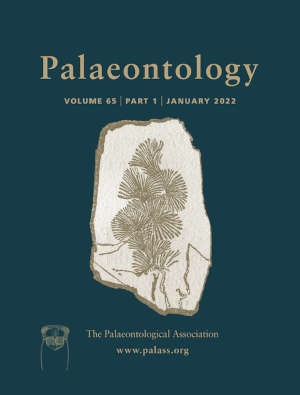Article: Ventral organization of Jianfengia multisegmentalis Hou, and its implications for the head segmentation of megacheirans
Publication: Palaeontology
Volume:
65
Part:
5
Publication Date:
2022
Article number:
e12624
Author(s):
Xilin Zhang, Yu Liu, Robert J. O'Flynn, Michel Schmidt, Roland R. Melzer, Xianguang Hou, Huijuan Mai, Jin Guo, Mengxiao Yu, and Javier Ortega-Hernández
Abstract
Abstract Megacheirans, or great-appendage euarthropods, have featured prominently in discussions regarding the early evolution of the head region in total-group Euarthropoda. However, several aspects of the ventral morphology of most representatives remain incompletely known given the loss of data associated with fossil compression, coupled with the rarity of some of these taxa. Here, we describe the ventral aspect of head organization of the jianfengiid megacheiran Jianfengia multisegmentalis using micro computed-tomography, and explore its evolutionary significance. The head consists of a pair of stalked eyes, a pair of great appendages, and four pairs of biramous appendages, all covered by a dorsal head shield. The rostral portion of the head bears a median projection, which we interpret as an anterior sclerite akin to that observed in several other Cambrian euarthropods. The anterior sclerite in J. multisegmentalis articulates with robust stalks with rounded projections in a more adaxial position, and bears the compound eyes. Critically, the ventral side of the head of J. multisegmentalis features a prominent lobe-shaped hypostome/labrum complex located immediately behind the great appendages, and between the first pair of biramous appendages. This situation is consistent with that observed in Leanchoilia illecebrosa and suggests a conserved, and possibly ancestral, pattern of a six-segmented head (eyes, great appendages and four biramous limb appendages) with a hypostome/labrum complex for Megacheira. The existence of the hypostome/labrum complex in J. multisegmentalis falsifies the hypothesis that the anterior projections on the head of jianfengiids might be homologues of the euarthropod labrum.
